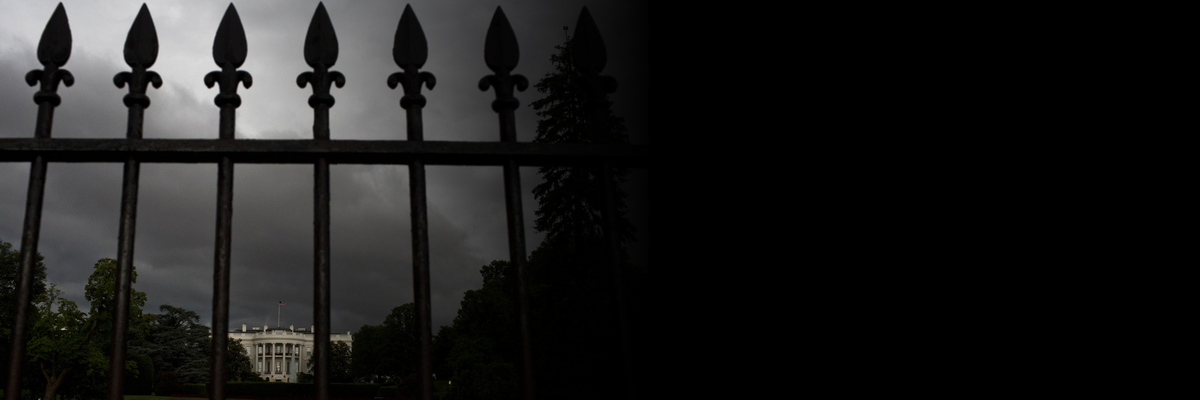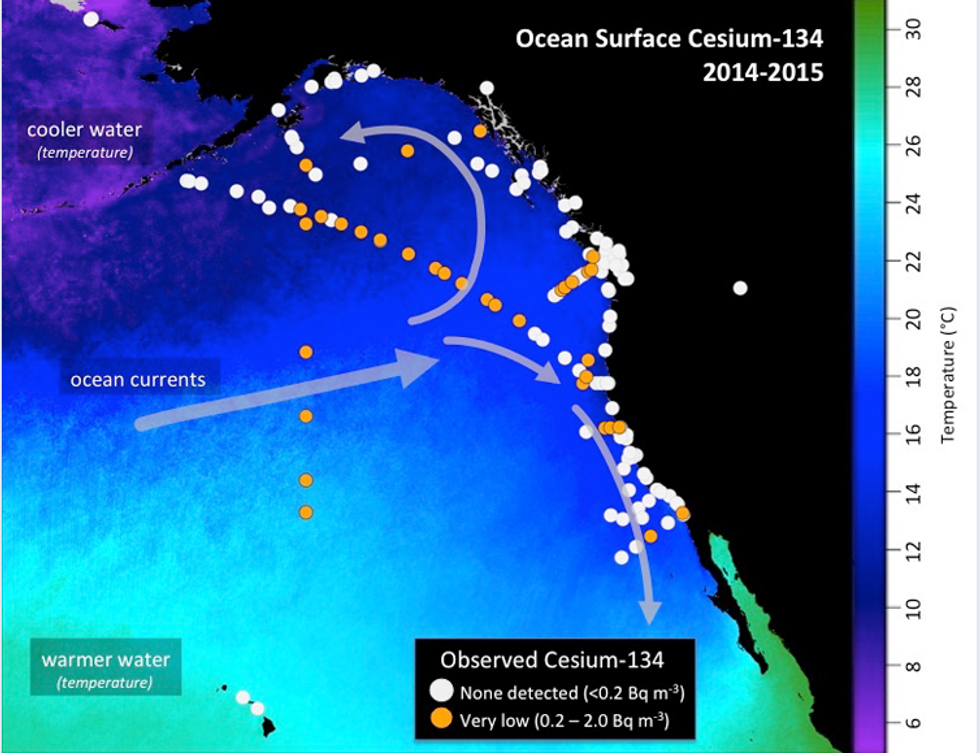Radiation from the 2011 Fukushima nuclear disaster in Japan has been detected at an increased number of sites off U.S. shores, including the highest level in the area detected to date, scientists announced Thursday.
While the levels are still too low to be considered a threat to human or marine life by the government's standards, tests of hundreds of samples of Pacific Ocean water reveal that the Fukushima Daiichi plant has continued to leak radioactive isotopes more than four years after the meltdown--and must not be dismissed, according to Woods Hole Oceanographic Institution (WHOI) marine radiochemist Ken Buesseler.
"Despite the fact that the levels of contamination off our shores remain well below government-established safety limits for human health or to marine life, the changing values underscore the need to more closely monitor contamination levels across the Pacific," Buesseler said Thursday. "[F]inding values that are still elevated off Fukushima confirms that there is continued release from the plant."
Scientists from the WHOI and Buesseler's citizen-science project Our Radioactive Ocean discovered trace amounts of cesium-134, the "fingerprint" of Fukushima, in 110 new Pacific samples off U.S. shores in 2015 alone.
The isotope is unique to Fukushima and has a relatively short two-year half life, which means "the only source of this cesium-134 in the Pacific today is from Fukushima," Buesseler said.
One sample collected roughly 1,600 miles west of San Francisco revealed the highest radiation level detected to date off the West Coast, the researchers said in a post on the project's website. "[In] one cubic meter of seawater (about 264 gallons), 11 radioactive decay events per second can be attributed to cesium atoms of both isotopes. That is 50 percent higher than we've seen before."
"[T]hese long-lived radioisotopes will serve as markers for years to come for scientists studying ocean currents and mixing in coastal and offshore waters," Buesseler continued.
The 2011 accident, prompted by an earthquake and tsunami off Japan's east coast, was the world's worst nuclear disaster since Chernobyl in 1986 and resulted in the near-total meltdown of three nuclear reactors at the Fukushima plant and a mass evacuation of the prefecture. Despite ongoing warnings about long-term health and environmental impacts and widespread opposition to nuclear power in the wake of the meltdown, Japan in August restarted a reactor at the Sendai power plant, about 620 miles southwest of Tokyo.



